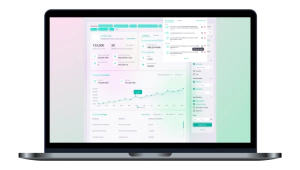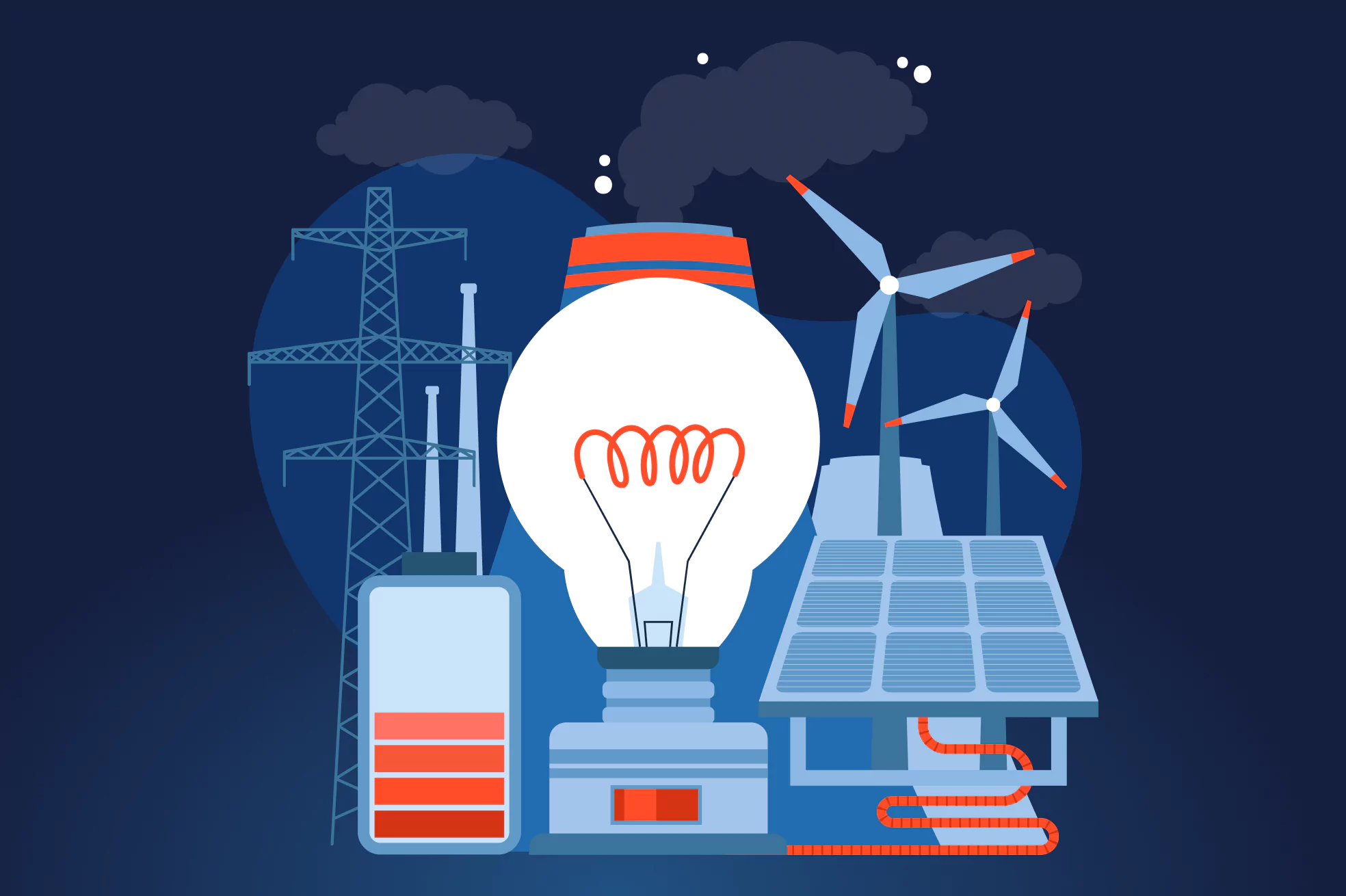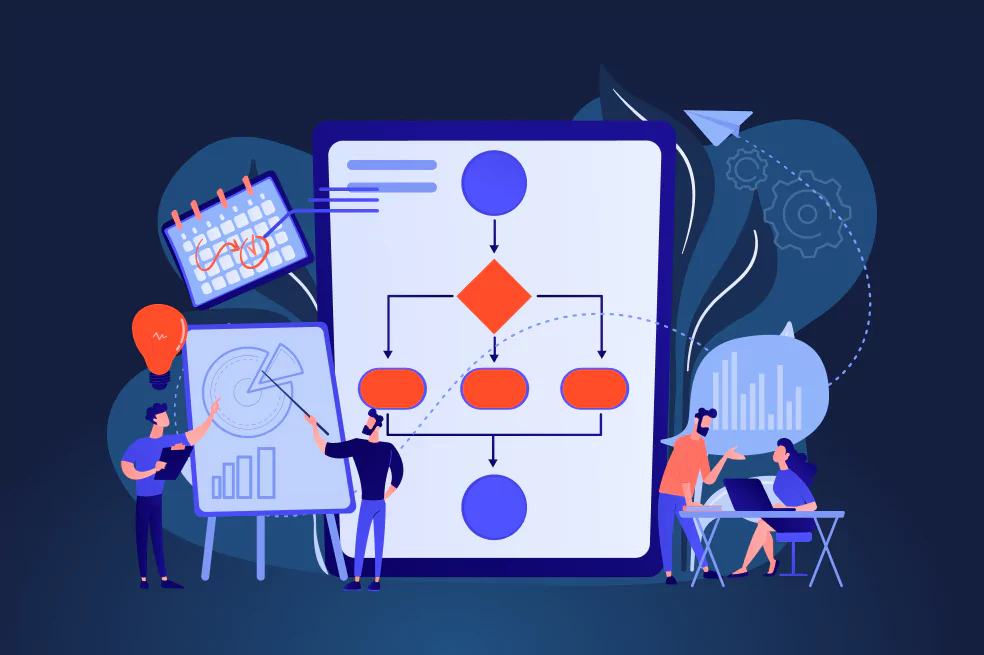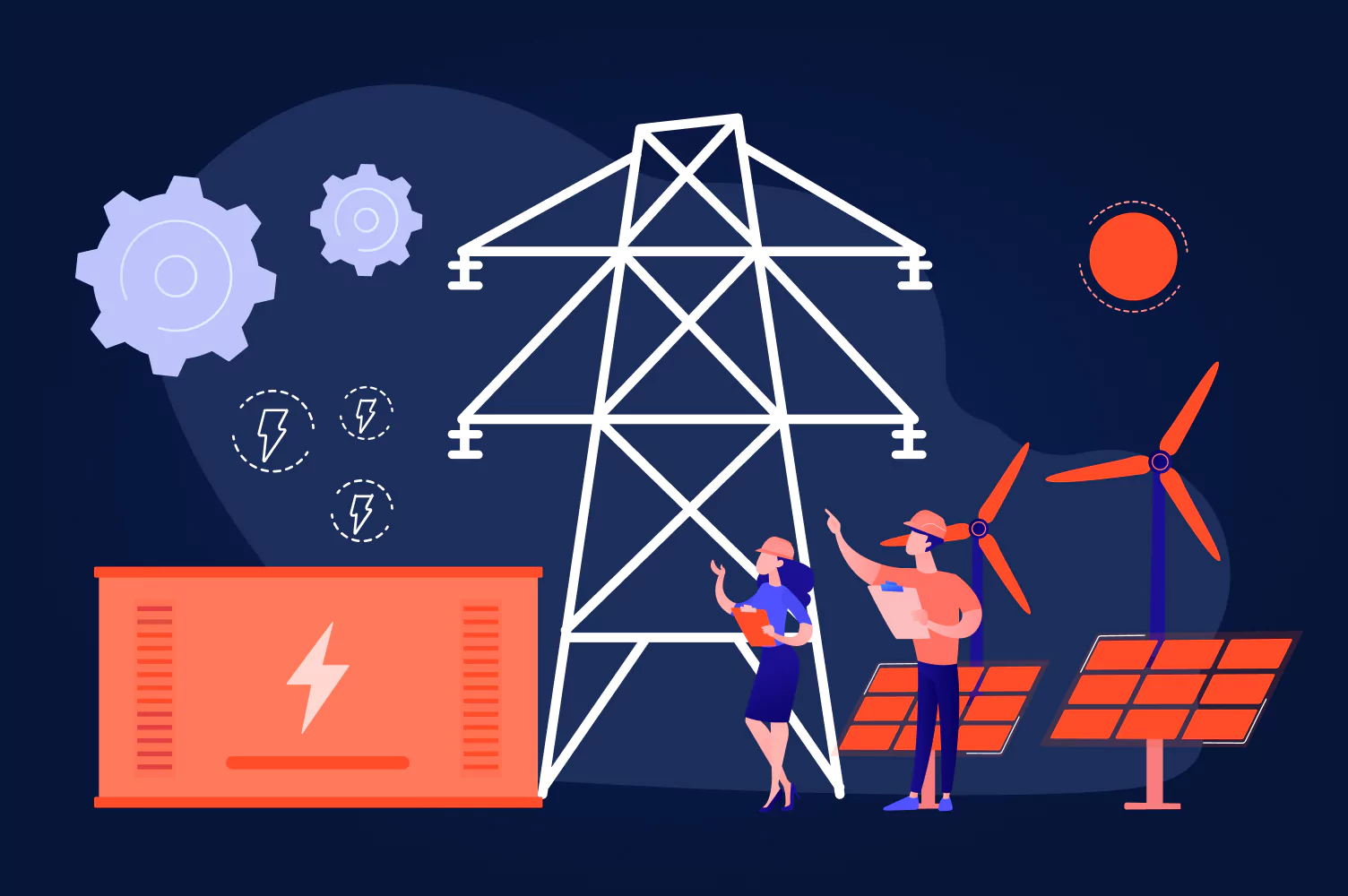Internet-of-Things (IoT) devices can do a lot. But when it comes to the energy sector, everybody is particularly excited about IoT transforming the entire industry. In fact, there is no sugarcoating for smart sensors, thermostats, and the like. Back in 2015, General Electric reported that a single IoT-based power plant can save $230 million within its lifecycle, while conventional power plants advanced with IoT applications can manage cost savings up to $50 million.
Moreover, energy is a resource everybody depends on. A heavy reliance on digital devices means that people need more electricity to power all that staff, but the energy crisis in Europe and global climate change are painting a grim picture of humanity’s future. By the way, IoT applications contribute to the traction of global energy shortage to some extent, which is why enhancing the energy sector with connected devices is a way to go in this situation.
Once IoT treads the path for energy efficiency, a glut of business opportunities will already be around the corner. The JatApp team has found some tasty ideas to satisfy your entrepreneurial appetite, so we proudly present to you our guide on IoT technology in the energy industry, with use cases and relatable business opportunities.
Why IoT solutions get the prime time in energy sector
The numbers we’ve mentioned in the beginning are a sign of a promising future for the energy sector powered with IoT solutions. However, what exactly happens when connected devices come into play?
The answer is simple. IoT devices collect and analyze data related to energy production, use, wastage, and so on, thereby informing people about decisions that lead to more efficient power management. For instance, a smart thermostat can measure the temperature inside a building, while intelligent algorithms determine whether a current level of heat use is way too high for keeping home warm and comfortable enough.
That’s the main reason why IoT applications in the energy sector get such staggering popularity. Of course, IoT-based energy efficiency solutions are not plain toys for nine-year-olds. IoT systems are always complex, which means that everybody feels like a nine-year-old when they hear about all components that entail an energy efficiency management IoT system.
It’s very weird to get such kind of “childhood trauma” when you’re already an adult going to build your own business. That’s why we’ve broken the concept of an IoT system into bite-sized pieces:
- Hardware. All your connected devices, connectors, gateways, and any other equipment that connects to your network count. Without connected hardware, your product has no right to be called an IoT application. You can call it so, but we bet this course of action can hardly make your business profitable and respected.
- Networks and protocols. It’s natural you need to connect your IoT devices to software that processes data gathered with your IoT fleet. You need a network and a bunch of protocols that make this connection possible. You can learn more about IoT networks and protocols in our dedicated article.
- Software. You’ve got connected devices, so that a network and protocols deliver collected data to the software that works on its analysis and informs you about the most optimal decision in this or that situation.
- User interface. The data collection loop seems to get closed, but you need to see what’s going on with your IoT system and be able to control it. In the majority of cases, it means you need an IoT dashboard that shows the state and performance of your connected devices, as well as provides valuable insights about how you can unleash your business might with better efficiency.
Even though the concept of a typical IoT system isn’t a hefty thing for you to understand any longer, working with it on a daily basis may still be a challenge. That’s why many businesses use so-called IoT platforms where many aspects of an IoT system are ready-made for a convenient set up and use.
In other words, IoT platforms provide you with infrastructure for your IoT solution: network, device management, analytics, technical support and such. Amazon, Google, and Microsoft are obvious leaders in this domain, you just need to find what is best for you. The main differences between these platforms are pricing models and types of IoT products the platforms work with.
Now that you’ve become somewhat enlightened about how IoT in the energy sector works and what IoT platforms are, we can discuss the most promising business opportunities for IoT-augmented energy solutions.
Where IoT devices buck the trends
The IoT touch of the energy sector is becoming more of a firm hold, which is why new use cases and opportunities may arise. JatApp has selected the most prominent approaches to how you can use IoT in the energy sector.
Energy production
We’ve already mentioned that power plants can significantly benefit from using IoT devices to reduce energy resource wastage and cut costs. Again, having various sensors, scanners, and meters connected to the power production facilities means that you can observe how the whole process is going and what you can do to make it more optimal from the perspective of expenses and leaving an environmental footprint. Also, let’s not forget that gathering data with smart devices and its analysis are the cornerstone for any IoT-enabled power plant.
At the same time, sources of renewable energy can enjoy the same benefits of IoT applications too, because the principles of data gathering and analytics don’t differ much from mainstream energy providers. In addition, renewable energy facilities can become connected assets as well: you’ll be able to monitor performance of your solar panel farm, for example.
Simply put, you can develop an IoT application that integrates with conventional and renewable energy production facilities for collecting and analyzing valuable data that can be used for performance improvement. At the same time, building an IoT-based power plant/renewable energy site from scratch isn’t a pipe dream: budget is the only roadblock that may hamper your cutting-edge project.
Smart cities
Energy efficiency is one of the key elements of a smart city. A smart city should include a range of connected devices that collect data and provide its comprehensive analytics. You won’t argue that almost any object in a city hinges on electric power. Collecting information about how a particular asset can use less energy without compromising performance is the main direction you need to look at.
You can come up with advanced solutions and build the entire city infrastructure that connects to renewable energy sources, reports about green energy availability and peak hours, notify about increased pollution and carbon footprint, supply organizations and businesses with analytics about their power consumption, and so on.
Architecture for a typical IoT smart city network
But in general, almost any idea can work out for the use cases related to energy efficiency in smart cities. All you need is your sharp mind and imagination.
Connected power grids
As energy plays such an important role today, IoT smart energy grid startups grow like mad today. Smart energy grids are connected devices that provide users with comprehensive analytics about energy consumption, peak usage hours, ability to connect to renewable energy or network with lower electricity price, type of devices consuming most of the power, a need for a greater power capacity, to name a few.
Your product doesn’t necessarily have to copycat some solution like we’ve just described. You can tap into any specific sub-industry, type of users, or even unique use cases.
For instance, our client from Switzerland came up with an idea of creating a network of electric vehicles (EVs) charging stations that are actually smart power grids for EVs. Each charging point is a connected power grid, but making it truly smart requires software that monitors connectivity status and provides other information about performance, availability, and energy usage.
For that reason, the client turned to JatApp with a request to build an EVs charging stations’ monitoring platform. Our team has developed web and native mobile applications that enable EV owners, businesses, and the charging stations provider to observe connectivity and performance status of each charging point.
In such a way, electric car owners can see whether a nearest charging station is available, while businesses and the stations provider can get real-time data about grids performance and take action when any of the stations start faltering or disconnects from the network.
Dashboard with charging stations connectivity status
Building energy efficiency management
Buildings are one of the main energy-consuming objects and large sources of carbon dioxide emissions. That is why IoT-driven building energy management systems (BEMS) and building energy optimization software (BEopt) are solutions that are on a tear today. You can learn more about this type of solution in our reletable article.
JatApp’s client from Germany developed a building energy management system that is powered with artificial intelligence (AI) to collect data from heating, ventilation and air conditioning (HVAC) facilities for creating comfortable living conditions and optimizing energy consumption at the same time. Once HVAC equipment is connected to the network, smart AI algorithms analyze the gathered data and report about current energy use, reduction of carbon dioxide emissions, cost savings, and other aspects related to energy efficiency.
Thanks to the user interface/user experience design provided by the JatApp team, the solution became simple to navigate, even though the entire system is obviously complex and includes numerous features a user can operate with.
BEMS solutions dashboard
Your product doesn’t have to integrate with HVAC facilities only. It can be anything: lighting systems, smart home kits, building automation platforms, power grid, and any other connected appliances that are typically used in residential or commercial buildings. And of course, you can roll everything into one solution to provide a full-fledged energy efficiency product for homes driven with an IoT technology.
Solutions for industries, manufacturers, and logistics
There is no doubt that IoT perfectly applies to various industries, logistics, and whole supply chains while the scope of connected devices in these sectors isn’t limited to energy efficiency only. Nevertheless, we talk about the energy aspect here, and IoT has a lot to say in respect to industrial and transportation sectors.
Actually, any manufacturer or industrial business involves various equipment and machinery that often depend on power. Consequently, connecting industrial equipment to the Internet means that manufacturers can have access to power use analytics and make adequate decisions about reducing costs, managing equipment wear and tear, or even predict whether a particular piece of equipment is going to break down any time soon.
As for logistics and transportation, the creation of a supply chain fully driven with electric vehicles is a revolutionary idea that some startups are already daring to bring to life. Anyway, observing energy efficiency across various elements of the supply chain from a provider of raw materials to logistics operators and warehourses is a niche that waits for your energy efficiency IoT application.
A global decarbonization of supply chains is coming, and you can participate in this paradigm-shifting process. Almost any idea will find the support of investors and customers; just beware that both industries and logistics need smart solutions for managing their energy use.
Challenges that hinder the push towards connected energy sector
IoT technology solutions make a confident stride over the market, but you won’t deny that IoT still has many barriers to face. If you’re going to build an IoT product for the energy sector, these problems become a painful bummer. You have to be aware of what to prepare yourself for:
- Power consumption. Yes, IoT solutions for the energy sector resemble a snake that bites its own tail. Many connected devices consume much of electricity, and you should be ready for eye-popping electricity bills.
- Integration with other systems. Energy efficiency IoT is often integrated with other solutions like smart home kits, building automation systems, and the like. Unfortunately, it can be a serious technical challenge to make both solutions work together in the name of users’ benefits and conveniences. We don’t say it is impossible to combine two solutions, but it can get tough.
- Security issues. Security of connected devices is an unpleasant topic for any entrepreneur who runs an IoT-driven business. IoT devices are often easy to hack and steal any sensitive data from the network. You should be extremely cautious about data security with your IoT network, otherwise you’ll appear in the center of a private data leak scandal sooner or later. Security is worth all of your money. Just make sure your network is safe to use.
- Standards. To be more specific, the problem is that IoT energy management solutions don’t have any standards to look at and follow. Everything you do can be either the best practice or a step into the void. Sure, absence of standards makes your team and yourself act in a more creative way, but that’s the danger as well. Your solution may not work properly by the end of the day or simply jump the shark like some consumer IoT products do.
- IoT architecture. Energy efficiency IoT products require the architecture to enable your system to send real-time data back and forth within the network, while composing such architecture isn’t easy because different solutions have their own peculiarities that are not always aligned with the possibility to build the architecture in a way that provides uninterrupted data exchange. Generally speaking, your tech team will have one more headache to deal with, which can cause a need for extra time and money for your project.
Overcome IoT challenges with a team of experienced engineers
Even though the challenges we’ve mentioned above may seem to be a serious hurdle to your energy efficiency IoT product, having a professional tech team is a way to overcome those challenges.
JatApp has access to the largest talent pools in the Eastern Europe. We can provide you with a tech team, which will help to come up with an idea for an IoT solution that meets your business goals. Our professionals will guide you through the entire project life cycle: from product discovery to its ongoing support.
Want to learn more about how we work? Just contact us, and we’ll get back to you as soon as possible.










